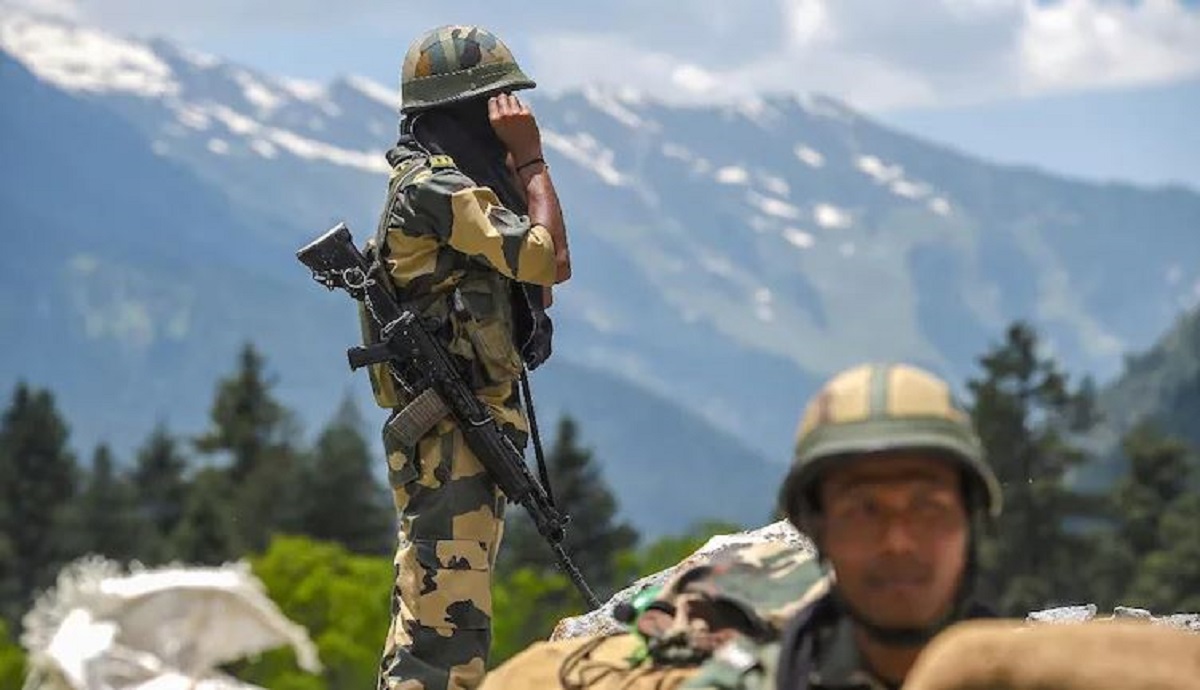The Ongoing Efforts for India-Pakistan Peace Talks
The Ongoing Efforts for India-Pakistan Peace Talks The India-Pakistan relationship has been one of the most complex and enduring geopolitical dynamics in modern history. For decades, these two nuclear-armed neighbors have faced off over territorial disputes, historical grievances, and ideological differences. Despite numerous attempts to bridge the gap and foster diplomatic ties, the path to lasting peace remains elusive. However, the India Pakistan peace talks continue to be a focal point of international attention, as both nations strive to overcome deep-rooted hostilities and move toward a future of cooperation and mutual understanding.
In this article, we explore the historical context, the challenges, and the ongoing efforts behind the India Pakistan peace talks, shedding light on the intricate web of diplomacy that has unfolded over the years. Though the road to peace has been fraught with obstacles, there is a growing recognition that dialogue and engagement remain essential for achieving stability in the region.

The Historical Context of the India-Pakistan Conflict
To understand the present-day India Pakistan peace talks, it is crucial to delve into the history that has shaped this complicated relationship. The origins of the conflict date back to the partition of British India in 1947, which led to the creation of two independent nations—India and Pakistan. The partition, a traumatic and violent event, resulted in the displacement of millions and the loss of countless lives. It also left behind a legacy of unresolved issues, including the fate of Kashmir, a region claimed by both nations.
The Kashmir dispute has been the most significant point of contention between India and Pakistan. Since 1947, the two countries have fought multiple wars over the region, with both sides claiming it as their own. The region remains a flashpoint for military tensions and has been a central issue in every round of India Pakistan peace talks. Despite numerous ceasefires and attempts at resolution, the dispute remains unresolved, fueling mistrust and animosity between the two nations.
Beyond Kashmir, both countries have struggled with broader ideological differences, with India positioning itself as the world’s largest secular democracy, while Pakistan has evolved into a predominantly Muslim nation. These differences have added to the complexity of negotiations, as each side has at times found it difficult to reconcile its core values with the demands of the other.
Key Milestones in the Peace Process
Yet, these milestones highlight the occasional optimism and the enduring hope that dialogue might one day lead to lasting peace.
The Shimla Agreement (1972)
Following the 1971 war, which led to the creation of Bangladesh, India and Pakistan signed the Shimla Agreement in 1972. The agreement called for the normalization of relations and outlined the framework for resolving the Kashmir issue through peaceful means. While the agreement was a step in the right direction, the lack of concrete progress on the ground left many of its goals unfulfilled.
The Lahore Declaration (1999)
Another pivotal moment in the peace process came in 1999, with the Lahore Declaration, signed by Indian Prime Minister Atal Bihari Vajpayee and Pakistani Prime Minister Nawaz Sharif. This agreement was significant for its emphasis on reducing military tensions and promoting cooperation. The two leaders expressed a commitment to peace and agreed to discuss the Kashmir issue in a constructive manner.
The Agra Summit (2001)
The Agra Summit, held in 2001, was another attempt at fostering dialogue between the two nations. Indian Prime Minister Vajpayee and Pakistani President Pervez Musharraf met in Agra to discuss issues ranging from Kashmir to terrorism. While the summit created a platform for dialogue, it ended without any significant breakthroughs.
The Ufa Summit (2015)
In 2015, there was a brief resurgence of optimism when Indian Prime Minister Narendra Modi and Pakistani Prime Minister Nawaz Sharif met in Ufa, Russia, on the sidelines of the Shanghai Cooperation Organization (SCO) summit. The two leaders agreed to resume talks on various issues, including terrorism, trade, and Kashmir.
The Kartarpur Corridor (2019)
In a rare moment of cooperation, India and Pakistan agreed to open the Kartarpur Corridor in 2019. This corridor, which connects the Gurdwara Darbar Sahib in Pakistan to India’s Punjab region, allowed Indian Sikh pilgrims to visit one of their holiest sites without requiring a visa. The opening of the corridor was hailed as a significant confidence-building measure, demonstrating that cooperation was possible, even in the most fraught political climate. Yet, the excitement surrounding the corridor’s opening was quickly overshadowed by ongoing tensions over other issues.
The Challenges Facing the India-Pakistan Peace Talks
While there have been numerous attempts at peace, the path to stability remains obstructed by a variety of challenges. These challenges stem from both internal and external factors, making it difficult for both nations to engage in productive dialogue for an extended period.
The Kashmir Issue
The Kashmir dispute remains the core of the conflict between India and Pakistan. Despite several rounds of negotiation, both countries continue to claim the region in its entirety. For Pakistan, the status of Kashmir is a matter of national pride, while for India, Kashmir represents the integrity of its territory. Both sides view the issue through deeply entrenched ideological and emotional lenses, making it extremely difficult to reach a compromise.
Terrorism and Cross-Border Violence
Another major obstacle in the India Pakistan peace talks is the issue of terrorism and cross-border violence. Pakistan has been accused of supporting militant groups operating in Indian-administered Kashmir, leading to a series of violent incidents. India, in turn, has criticized Pakistan for failing to curb these groups, further straining diplomatic relations. The issue of terrorism has been a recurring theme in peace talks, and any meaningful progress on this front remains elusive.
Political Instability
Political instability in both countries has also hindered peace efforts. In India, political leadership has often shifted between parties with varying attitudes toward Pakistan, with some advocating for hardline policies and others pushing for dialogue. In Pakistan, the military has historically played a dominant role in shaping foreign policy, and this has sometimes led to a disconnect between the civilian government and the military’s approach to India. These internal political dynamics often lead to shifts in policy, preventing any sustained effort toward peace.
Nationalism and Public Opinion
Nationalism in both India and Pakistan has exacerbated the challenges of peace talks. Public opinion in both countries is often shaped by historical narratives and the portrayal of the “other” as an enemy. In India, the media often presents Pakistan as a source of terrorism and aggression, while in Pakistan, India is frequently depicted as a bully on the world stage. These narratives create a climate of distrust, making it difficult for the leaders of both countries to take bold steps toward reconciliation without facing backlash from their respective populations.
International Influence
The role of international powers in the India-Pakistan peace process cannot be understated. The United States, China, and other global players have, at various points, sought to mediate between the two countries. However, their involvement has often been seen as opportunistic, driven by strategic interests rather than a genuine desire for peace. The involvement of external actors can complicate matters, as both India and Pakistan have their own set of interests that may not align with those of global powers.
Moving Forward: The Future of India-Pakistan Peace Talks
Despite the many challenges, there is still hope for the future of the India Pakistan peace talks. Several factors could help foster a renewed commitment to dialogue and cooperation.
People-to-People Engagement
One of the most promising developments in recent years has been the growing number of people-to-people exchanges between India and Pakistan. Initiatives such as cultural exchanges, academic collaborations, and joint sports events have helped to build bridges between the citizens of both nations. By fostering understanding and empathy at the grassroots level, these efforts can create a more conducive environment for political leaders to engage in meaningful talks.
Economic Cooperation
Economic cooperation is another area where India and Pakistan could find common ground. Despite the political tensions, trade between the two countries has the potential to benefit both sides. Economic interdependence could provide a foundation for long-term peace by creating incentives for both nations to maintain stable relations. In the past, trade agreements have been used as confidence-building measures, and this avenue could be revisited as part of any future peace initiatives.
Regional and Global Dynamics
The shifting dynamics in the region and the broader global landscape could also play a role in advancing peace. As China’s influence grows, both India and Pakistan may find it in their best interests to cooperate in order to counterbalance the rising superpower. Additionally, the international community’s growing focus on regional stability could push both countries toward dialogue, especially if global players continue to apply diplomatic pressure and offer mediation.
Conclusion
The India Pakistan peace talks have been a long and arduous journey, filled with setbacks, disappointments, and moments of hope. While the challenges are formidable, the desire for peace remains strong on both sides of the border. The road to reconciliation is not easy, but with sustained efforts, trust-building initiatives, and a commitment to dialogue, it is possible to envision a future where India and Pakistan can coexist peacefully and cooperatively. The ongoing efforts toward peace may take time, but as history has shown, perseverance and diplomacy can sometimes overcome even the most entrenched conflicts.







